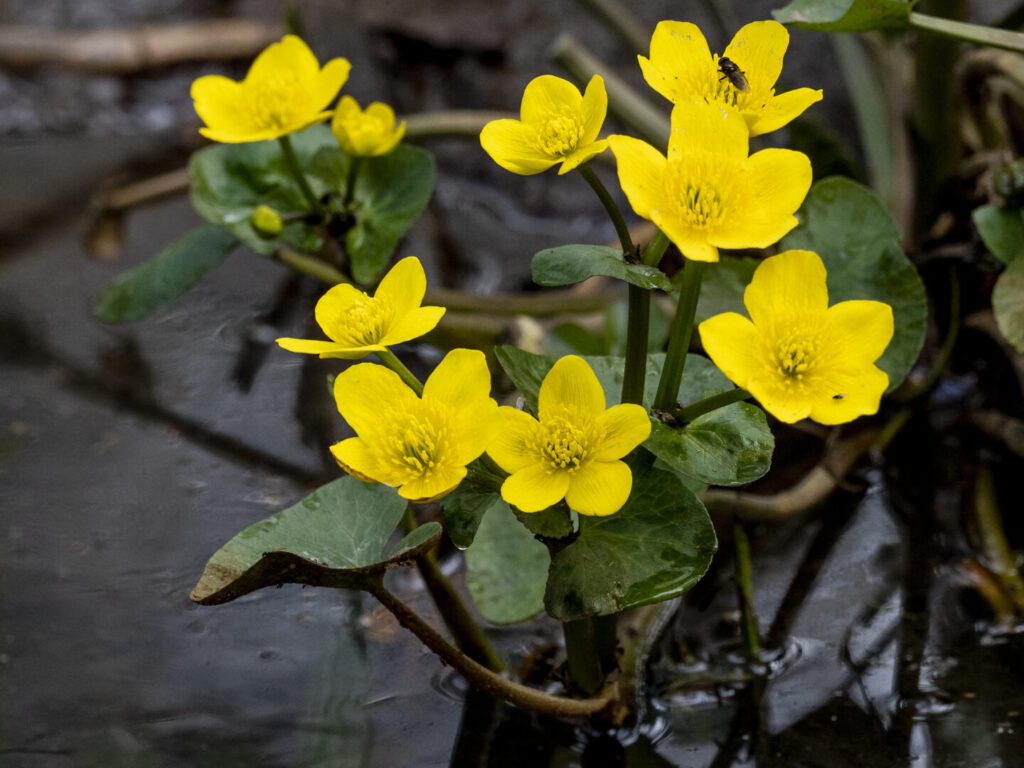The nature around Lake Arbi is quite interesting and high in biodiversity, you can find many different plant species growing here. In the lake you can find the yellow water lily, the white water-lily and white dwarf water lily; in some places, you can also see the broad-leaved pondweed, flat-stalked pondweed and spiked watermilfoil. On the shore the common reed, marsh-marigold, water arum, water horsetail, and the wood club-rush can be found. A little further from the shore there is quite a lot of meadowsweet and other species characteristic of grasslands, for example, species of clover, the common yarrow, the common self-heal, vetch species and grasses. Alien species such as the small balsam and Canadian goldenrod can also be found around the lake.

The wood club-rush. Photo: Iris Reinula.
Make sure that you pay attention to the plants growing entirely in water when walking around the lake. These plants have several unique adaptations to living in the water. For example, aquatic plants do not need strong stems because water holds up weaker stems as well. There is no need to waste many resources on growing the roots either because the water and dissolved nutrients also reach the plant through the leaves. However, aquatic plants can have special roots to reach oxygen. Aquatic plants often have special leaves. Many species have leaves floating on the water’s surface (for example, water lilies). Some species have leaves in different shapes depending on whether they are in water or extending above the water. For example, the broad-leaved pondweed’s floating leaves are wide, but submerged leaves are very narrow. Some species have two different growth forms: an aquatic and a terrestrial form (the water smartweed, for example). The two different forms of the same species might even seem like two different species. Plants growing on the shore also have a number of unique adaptations because with changing water levels, they have to cope with both wet and dry environments.

Marsh-marigold. Photo: Rein Kuresoo.

Yellow water lily. Photo: Rein Kuresoo.
Authors: Iris Reinula, Marianne Kaldra
Main photo: Ragnar Vutt
